Critical Concrete in Porto
Critical Concrete were this summer refurbishing a social housing configuration and build a prototype of passive heating. Students worked in collaboration with Sebastião de Botton (Colectivo Warehouse), Hugo Dourado (Colectivo Mel), João Moura and Samuel Kalika (Critical Concrete).
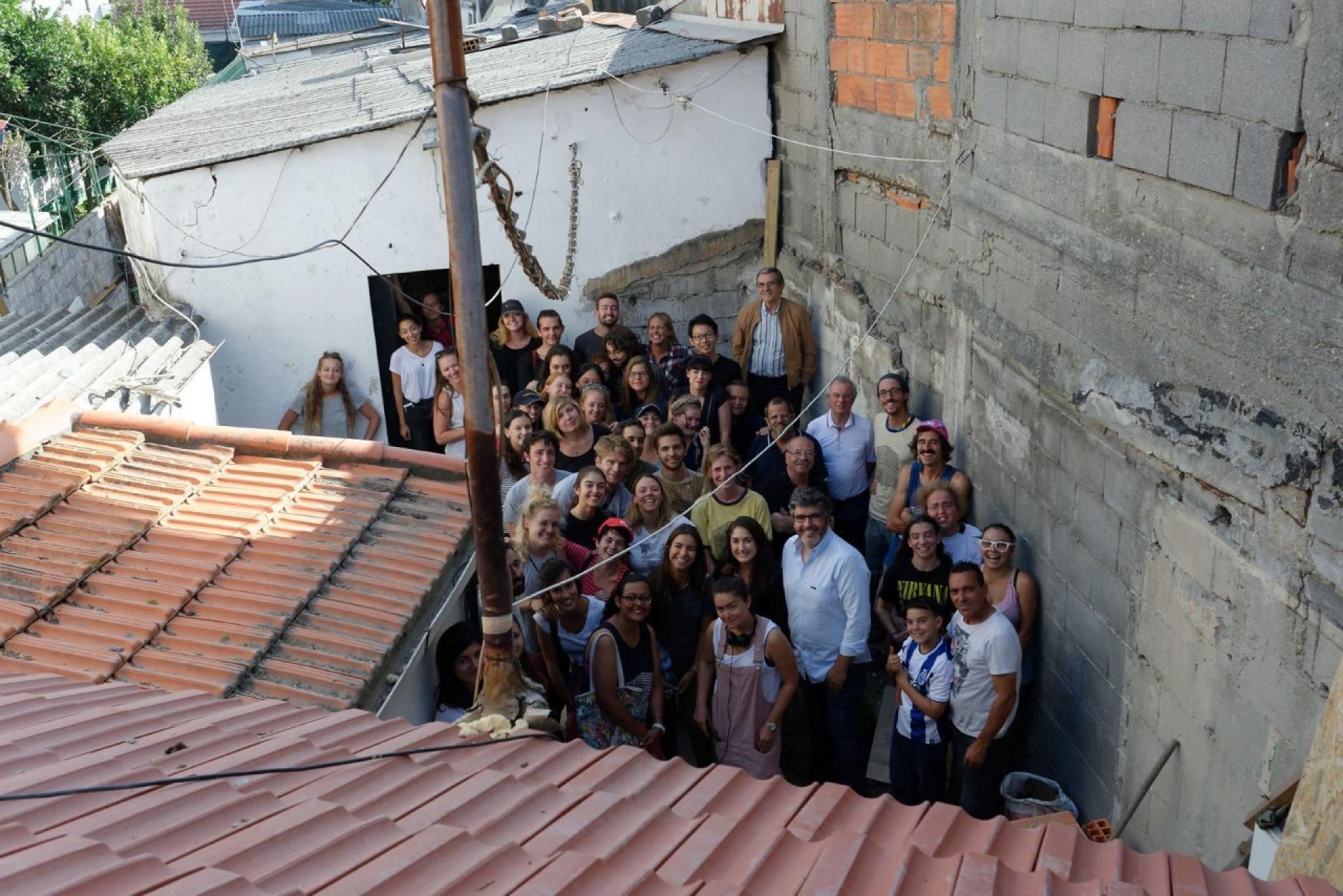
All participants in the backyard of renovated house. | Photo by Riccardo Bartali
Over the last three years, more than 30 million of euros have been invested in Porto social housing neighborhoods. In spite of that, many families still exist without a proper house today. The families of Gisela and Augusta are one of such family and have been therefore assisted in the refurbishment of their shared house.
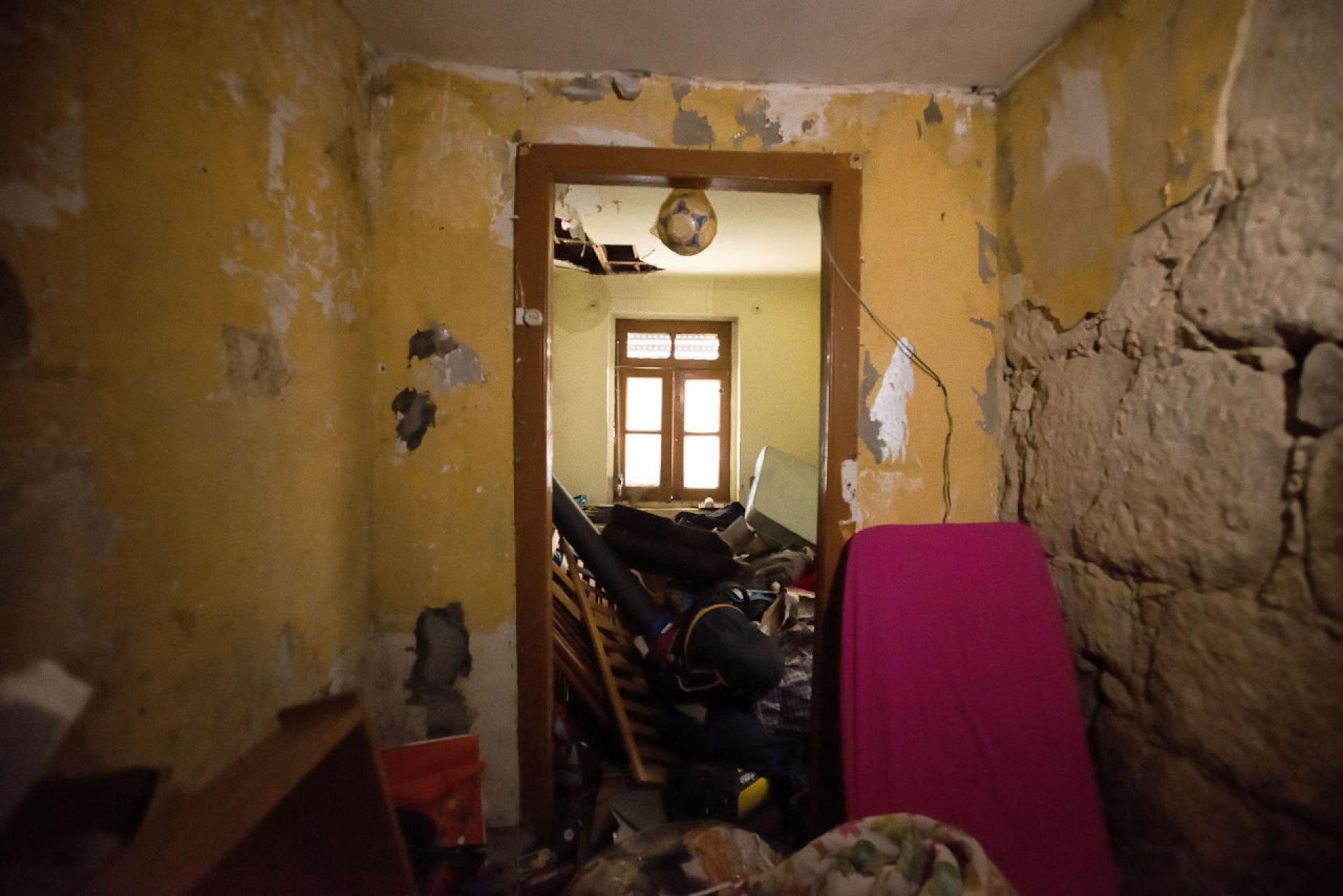
The neglected interior before renovation. | Photo by Riccardo Bartali
The second edition of Critical Concrete Summer School in Porto hosted 42 students from 19 countries in Porto during the three weeks of August 2017. While the most of the people spent their summer on holiday, the students teamed up to refurbish the house for one of the families, which misses the resources to improve their precarious housing conditions.
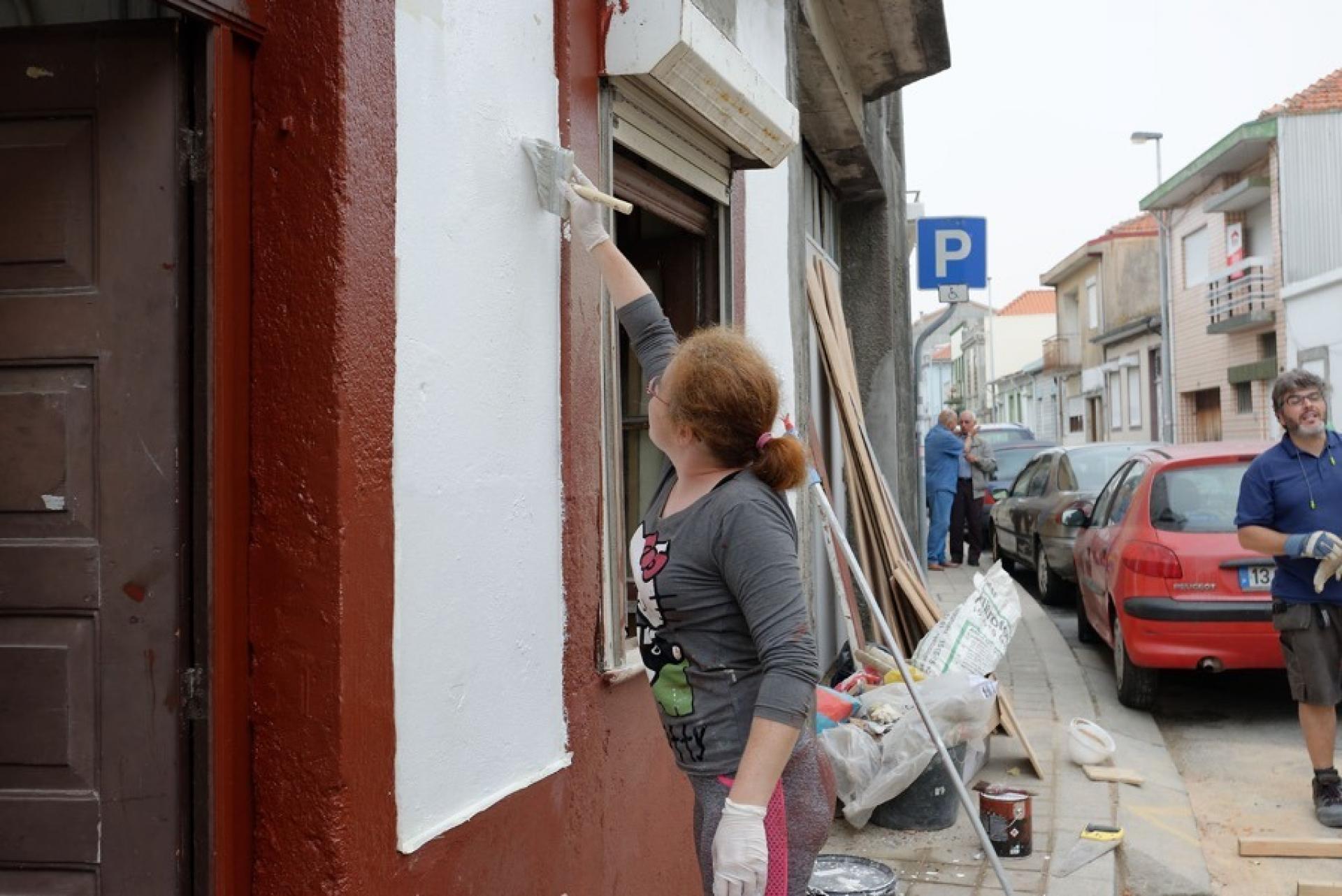
One of the inhabitant helping to paint the facade. | Photo by Riccardo Bartali
“We couldn’t lead a satisfying life in this house. That’s what we wished for, to live in our home” says Augusta, habitant of the rehabilitated house in the Ramalde neighbourhood. During the summer school, four professional mentors from Portugal and France supervised the building process of the students, while ten local and international theoreticians inspired the group with lectures on sustainable architecture strategies, low budget projects and recyclable materials. As an alternative to standard technologies and resources, with the support of various partner companies, the participants used local materials and re-used waste from disposal sites.
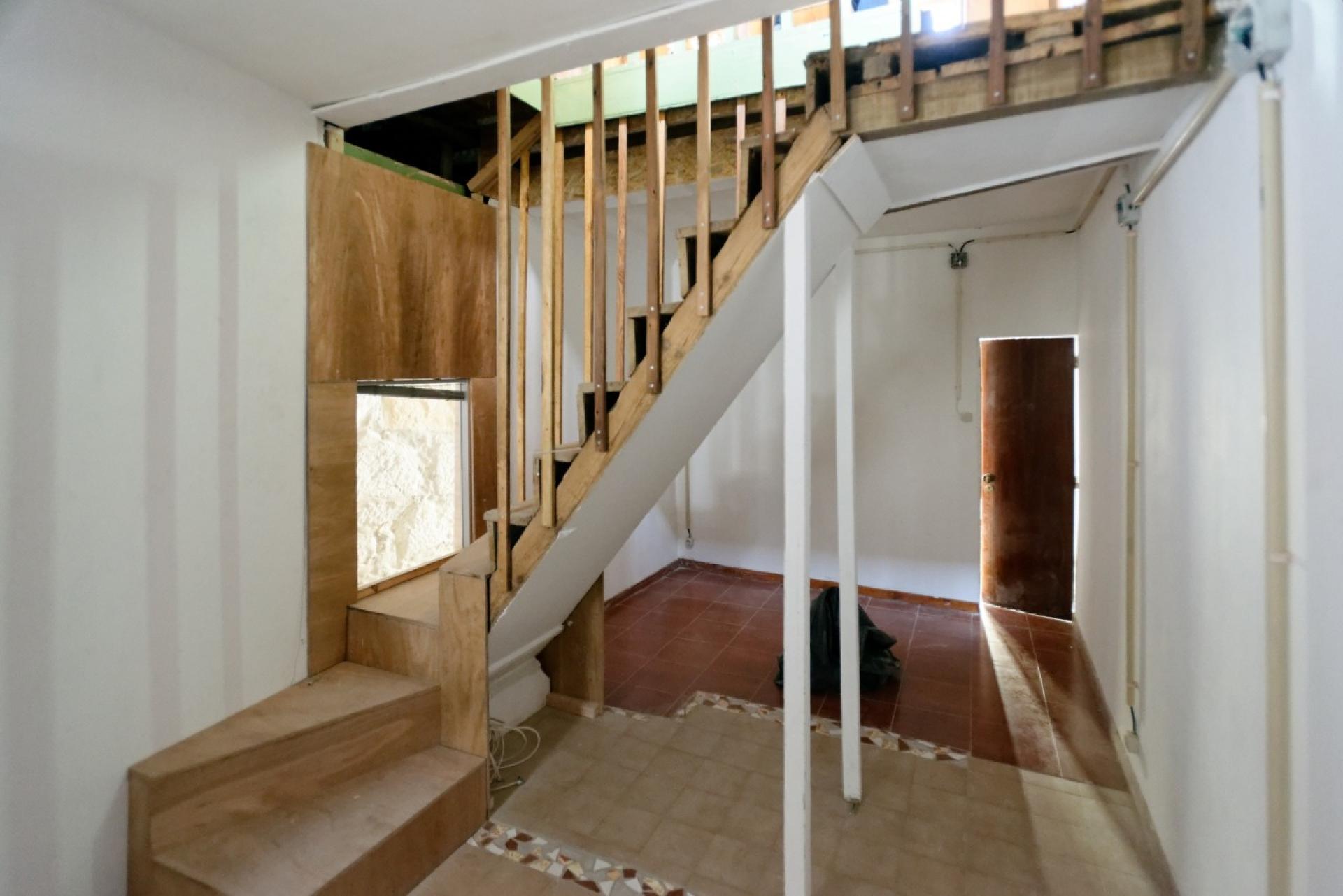
New staircase. | Photo by Riccardo Bartali
The main issue for the five members family was to secure their house against humidity by fixing its rooftop. They wanted their own space to live with dignity without depending on their parents place for cooking and dining. Nine years old boy Rafael is suffering from asthma. He is keen about Minecraft and was so excited when he realized that he is getting his own bedroom decorated with the pictures of his favorite planets and Mickey Mouse. It was the most appreciated birthday present for him. Diana, the eldest daughter, who shares the bedroom with her grandparents, also dreamed of her own bedroom sharing her time there with friends.
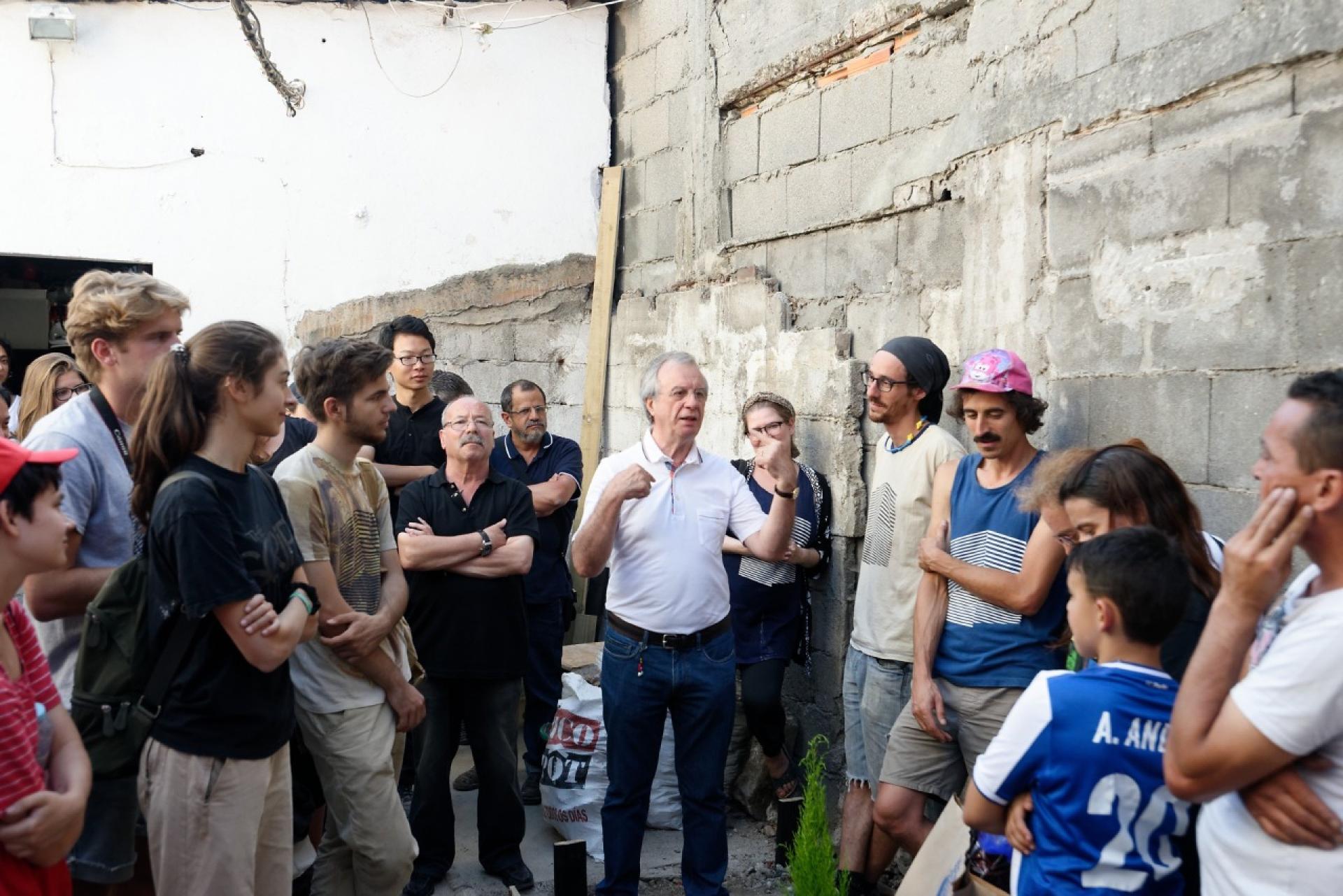
Opening ceremony with a head of Ramalde district. | Photo by Riccardo Bartali
In January 2017, in coordination with the Junta de Freguesia de Ramalde and the association ASAS of Ramalde, Critical Concrete selected the house, which could be the working site for students from all the world, from Lebanon, Brazil to China. During the summer school, they developed their technical skills and social competences by engaging in the program, designed to put sustainable architecture into practice and fostering social involvement with a high impact in the communities in Porto and beyond.
The close cooperation among the family, students, Critical Concrete and other partners of the project made it possible to overcome the time pressure from completion the refurbishment in just 3 weeks. The entire project results from the close involvement of all these participants.
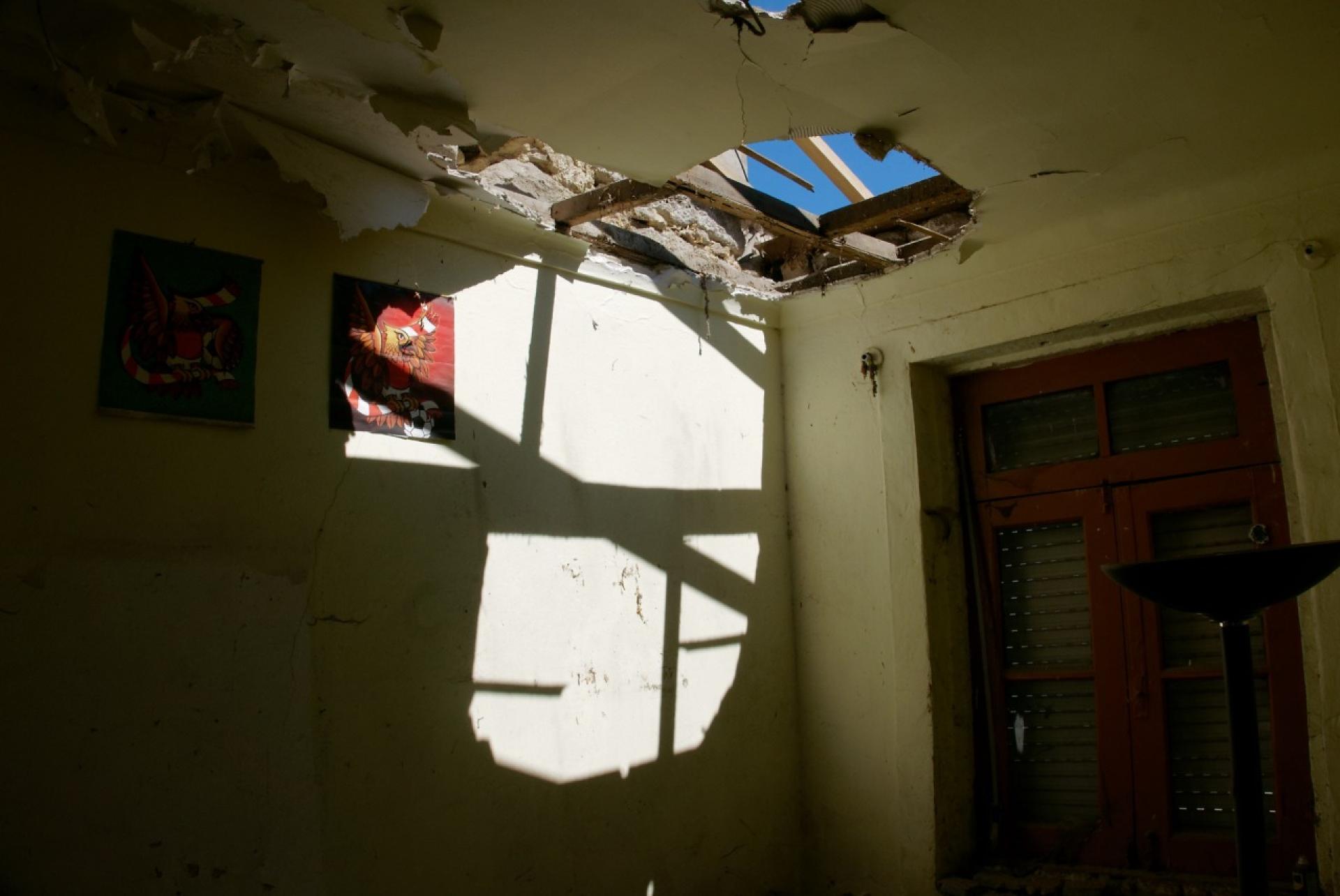
The hole in the roof before renovation. | Photo by Riccardo Bartali
Working Week
On Monday, the tension was in the air as more than half of the floor in the ground floor was still not laid, the staircase missed the last two steps, the plumbing system was not fully connected, and a soft breeze blew through the window and door openings. Only insulated panels were attached on the wall. Everyone took his/her responsibilities and made the bathroom possible to use already on Wednesday.
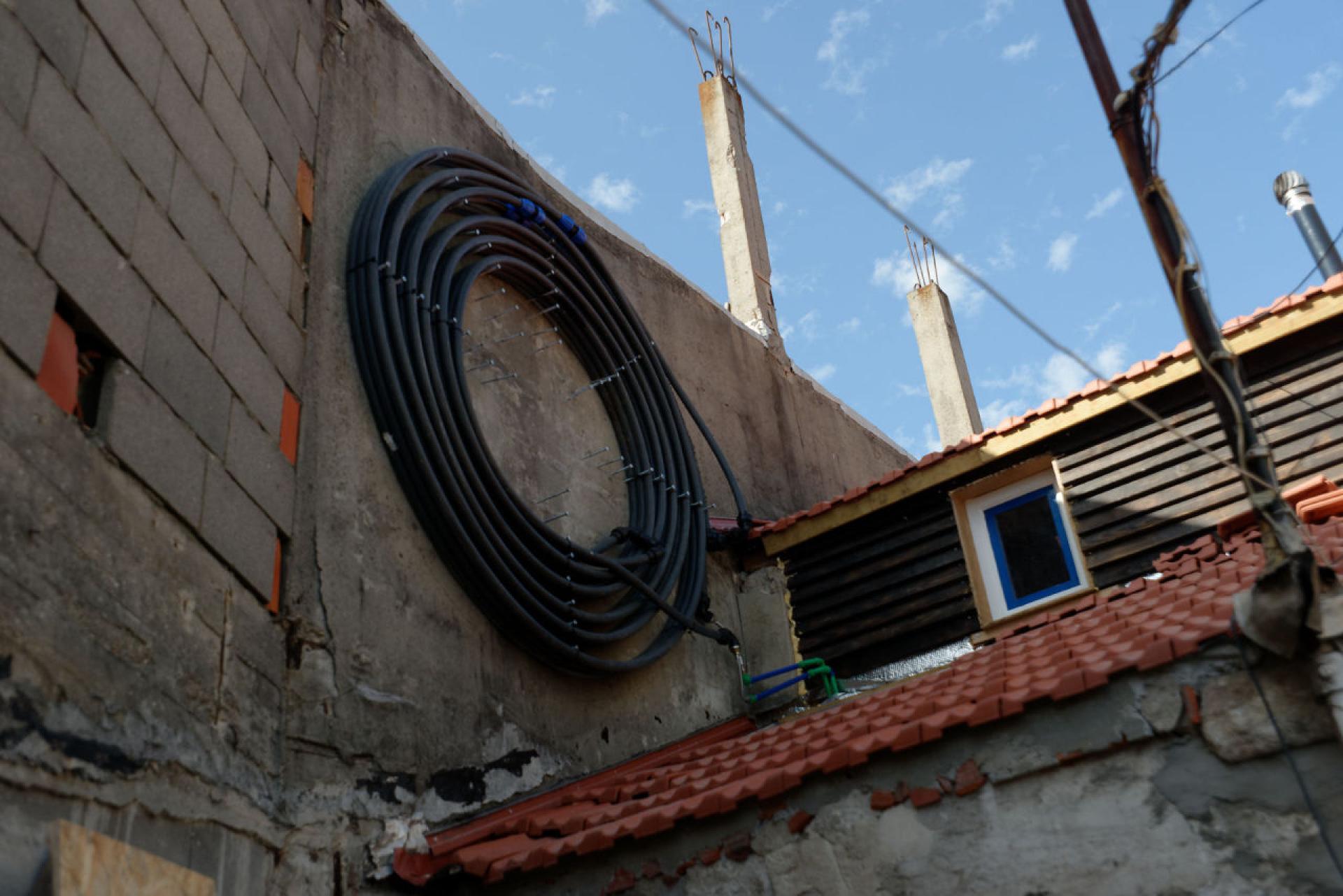
The summer school introduced the sustainable strategy for heating the water. | Photo by Riccardo Bartali
It seemed unbelievable, but everything was done on Saturday and during the ceremony, the family received the house key and an immense joy from a group of youngsters grateful for the hands-on opportunity they were given. The program certified by the FBAUP (Faculdade de Belas Artes do Porto) is a model that combines educational and social work, giving students and families in-need the opportunity to share life experiences and create tight relationships.
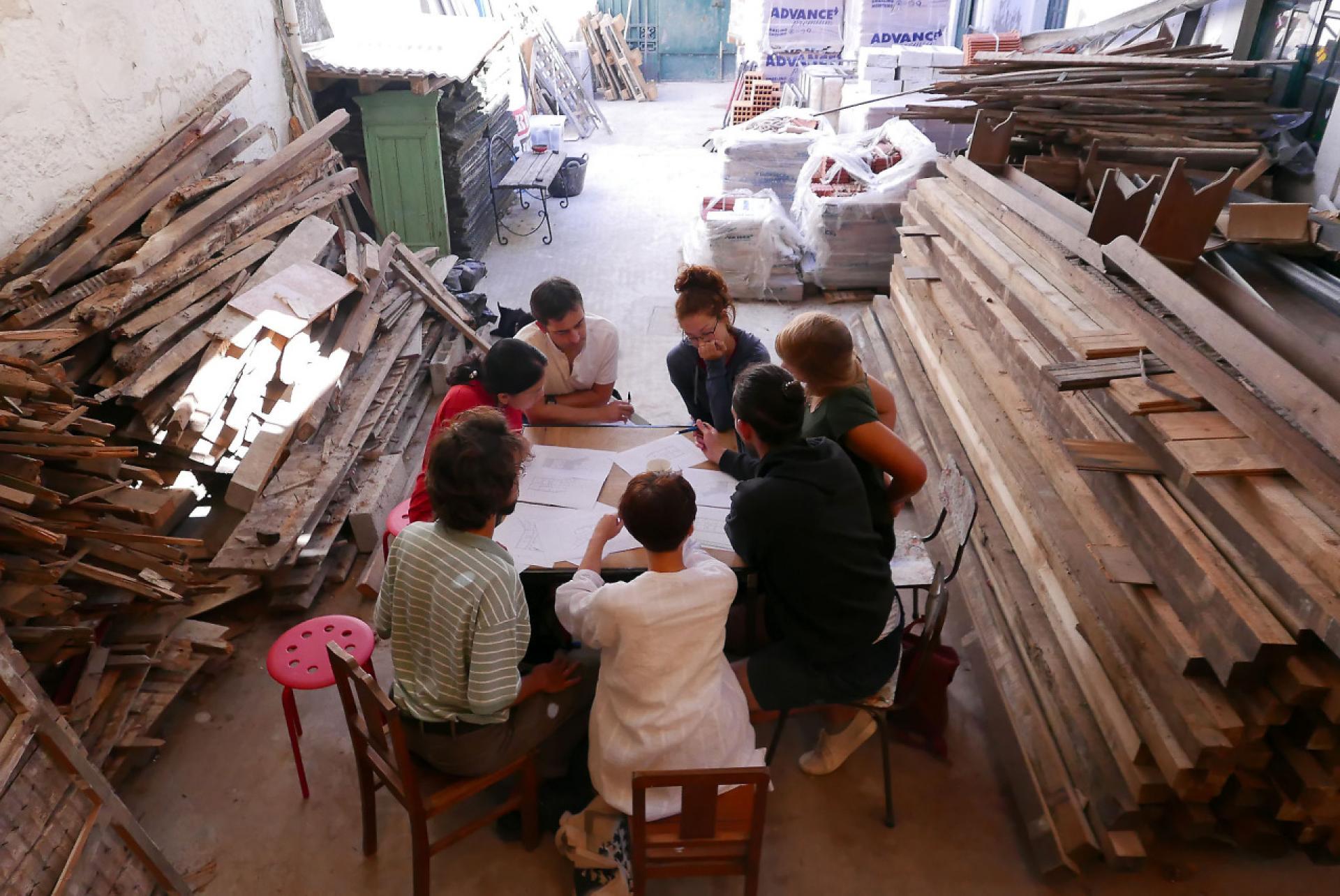
Brainstormings and lectures in the Co-lateral centre. | Photo by Riccardo Bartali
Critical Concrete is already preparing the program for 2018 Summer school, with the aim of expanding its field of action, particularly in the research on reuse of materials and sustainable strategies, that will lead to deepening the impact of their socio-spatial interventions.
—
by Augusta Araujo and Jana Džadoňová